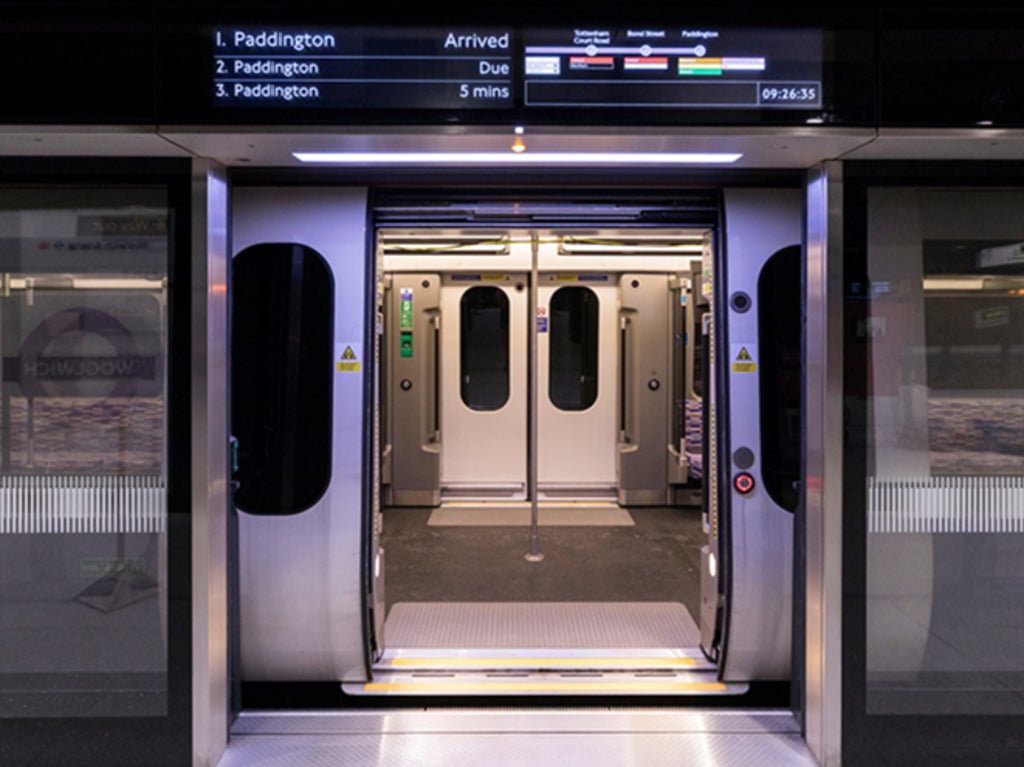
Crossrail, the £18.8bn project to build a fast east-west link through London, is running trials involving hundreds of volunteers in train evacuations.
The latest exercise took place on Sunday between Woolwich and Canary Wharf, involving Transport for London (TfL) and Network Rail employees, their families and some media – including Tom Edwards, transport correspondent for BBC London.
He reports: “Over the Tannoy, the driver soon announces that we have ‘broken down’.
“Despite this, everyone is in good spirits. After much coming and going from a British Transport Police officer and the driver, a rescue train is brought in and we are all marched on to that train, which takes us to Canary Wharf.”
A spokesperson for Crossrail said: “More than 150 trial operations scenarios are being carried out to ensure the readiness of the railway for passenger service.
“These include exercises to make sure that all systems and procedures work effectively and staff can respond to any incidents, including customers being unwell, signal failures and train evacuations.”
Volunteers include people with disabilities and mobility impairments. Wheelchair users, those with hidden disabilities and guide dog users are being asked for feedback after the trials.
Nearly 2,000 people were involved in Sunday’s trial, including the rail presenter Tim Dunn.
He tweeted: “Britain might’ve waited a long time for it, but WOW this is urban transport done right. It will have been worth the wait.”
Almost at once criticisms about Crossrail began to arrive, leading Mr Dunn to tweet in response: “May I ask a favour this Sunday afternoon? Please stop using replies to my tweets to get your anger about govt investment off yr chest.
“I don’t make the decisions yet I get all your fury... and frankly, it is horrible. Please, just let some of us enjoy a nice day.”
Crossrail was designed to link Reading and Heathrow airport, west of the capital, with Shenfield in Essex and Abbey Wood in southeast London.
Trains were due to start running through the heart of London between Paddington in the west and Whitechapel in the east in 2018.
With only months to go before the launch, the project team admitted it was way behind schedule.
Since then costs have mushroomed to £4bn above the original £14.8bn budget – a rise of 27 per cent. Testing the system is currently costing around £2m per day.
The delay – and resulting absence of revenue – has added to the damage to TfL’s finances, The organisation will not say when the line will open, except to pledge that it will be at some time in the first half of 2020.
Initially the only through-London service will be between Abbey Wood in the southeast of the capital and Paddington station on the western side of the city centre.
Travellers hoping to travel from Reading or Heathrow airport to Shenfield will need to change trains twice: at Paddington and at Liverpool Street.
The western half of the project will be connected through to Abbey Wood in “autumn 2022” with the final timetable – involving trains every five minutes in both directions – by May 2023.
When complete, the railway will include 26 miles of new tunnels and a total of 41 stations.







